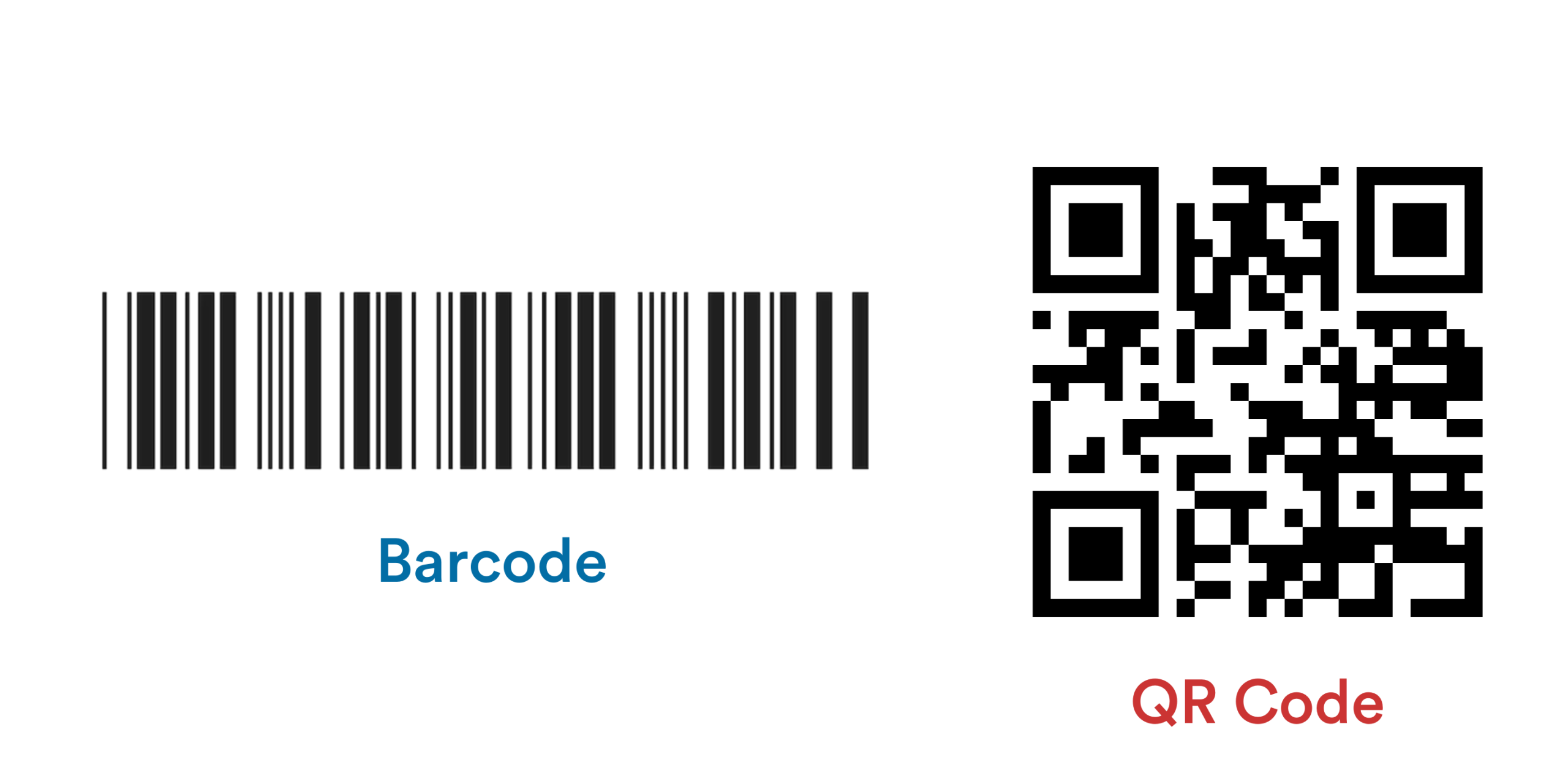What are QR codes and barcodes?
 You may have used your mobile phone to scan a QR code to get a coupon at a store, to access a WiFi network, or to open a menu at a restaurant. You’re likely also familiar with the striped pattern of barcodes, which are printed on everyday labels like clothing tags, grocery store items, and books. Both types of codes contain information that is decoded by a scanner. A barcode is a linear one-dimensional series of parallel lines. A quick-response code (QR code) is a type of two-dimensional matrix barcode made up of squares. QR codes and barcodes are readable by machines—including optical ballot scanners—but not readable by humans.
You may have used your mobile phone to scan a QR code to get a coupon at a store, to access a WiFi network, or to open a menu at a restaurant. You’re likely also familiar with the striped pattern of barcodes, which are printed on everyday labels like clothing tags, grocery store items, and books. Both types of codes contain information that is decoded by a scanner. A barcode is a linear one-dimensional series of parallel lines. A quick-response code (QR code) is a type of two-dimensional matrix barcode made up of squares. QR codes and barcodes are readable by machines—including optical ballot scanners—but not readable by humans.
Why are these codes printed on ballots?
QR codes and barcodes can tell a ballot scanner which election the ballot is valid for, what town, ward, or precinct you live in, or identify each ballot page number. In these cases, the barcodes and QR codes, printed in the margins of the ballot, are the same for every ballot in a particular ballot style—that’s the unique combination of candidates and issues that appear on your ballot. Think of a friend who lives in your county but in another city or town: they may vote for different school board members or vote for a mayor while you do not—you have different ballot styles. These types of codes do not contain voter-identifying information or encode your vote selections; they just tell the scanner which election and which precinct your ballot belongs to, which is especially important in vote center and mail ballot jurisdictions.
Some ballot marking devices (BMDs) print additional QR codes or barcodes on ballots to encode voters’ selections. These BMDs also print the text of the voter’s selections for each contest; however, the ballot scanner reads the encoded part to tabulate the voter’s ballot—not the text. While voters can (and should!) review their selections in the printed text, they can’t directly interpret the codes the ballot scanner will read to tabulate their votes. Other BMDs print ballots that are tabulated by scanners using Optical Character Recognition (OCR) to read the human-readable text printed on the ballot.
Some BMDs simply mark ballots by filling in ovals on the ballot to indicate voter choices; these machines don’t encode voters’ selections. Like the ballots voters hand mark with a pen, these machine-printed ballots are tabulated by scanners that interpret the filled-in ovals.
Recently, voting system manufacturers with machines that encode votes have begun moving toward alternatives. For example, in 2019, Colorado prohibited the use of QR codes on ballots, which prompted that state’s main vendor to modify its voting system software to provide a BMD configuration that prints marked ballots that are identical to those hand marked by voters. This functionality was included in a new voting system version that was certified in 2023 and is currently used in Colorado, Michigan, and Nevada. Other election equipment manufacturers are also working on BMDs that print ballots in the same format as ballots hand marked by voters.
Are ballots that encode votes in QR codes and barcodes a security risk?
Some election security experts have raised concerns that QR codes and barcodes could be exploited to encode false votes. Since QR codes and barcodes are not directly human-readable, in such an attack, a ballot might appear to reflect a voter’s choices in the printed text, while the scanner actually reads and tabulates the selections that an attacker encoded. This can also happen by accident due to programming errors. If this kind of error is discovered during an election—as it was in 2023—poll worker instructions may vary, and some voters may be advised to ignore the human-readable text and trust that the encoded selections are correct. Whether the human-readable text or the (incorrect) encoded votes are the official votes depends on state law.
QR codes and barcodes make sense for ballot styles, but they shouldn’t be used to encode votes. The technology already exists—BMDs that do not encode voter selections are currently used in U.S. elections—and more manufacturers are developing BMDs that mark or print ballots that look the same as ballots hand marked by voters. Voters should be able to read their BMD-printed vote selections and review what the tabulator will scan to count their votes.
Want to learn even more about QR codes and barcodes?
To find out if your jurisdiction uses machines that print QR codes or barcodes to encode votes, visit the Verifier’s new QR/Barcode map.